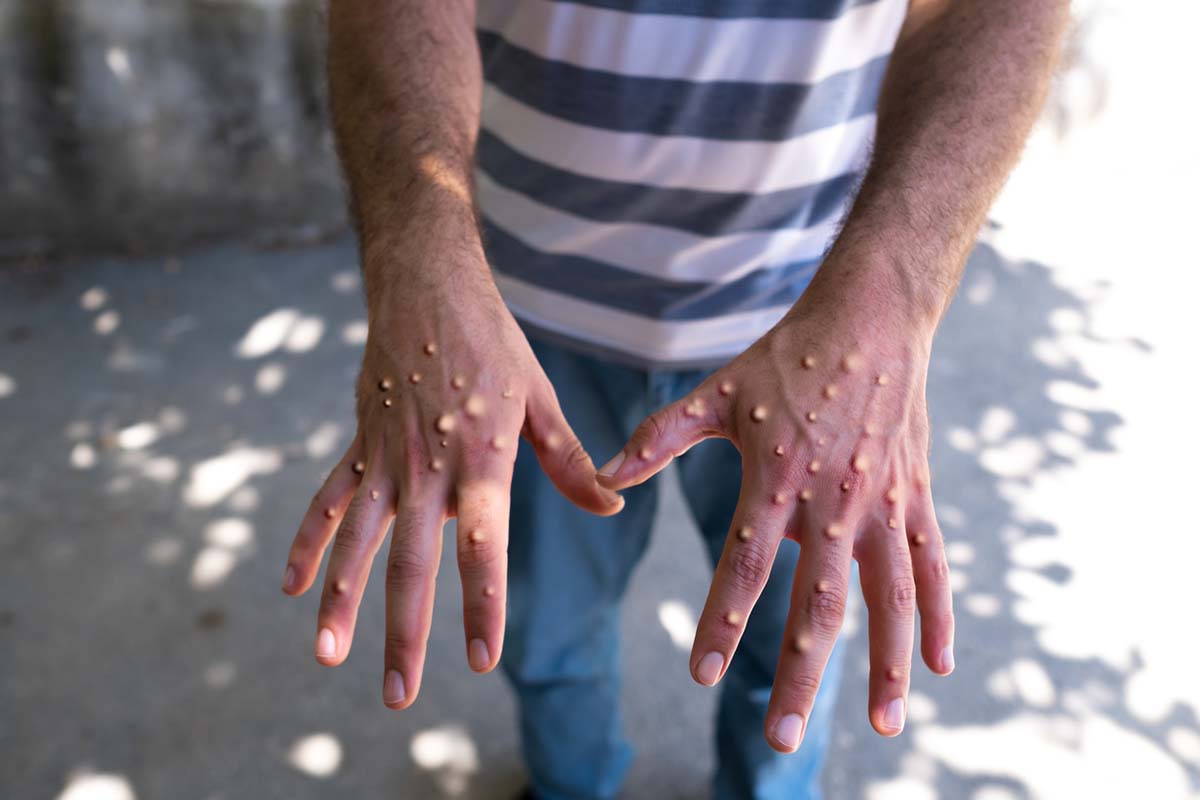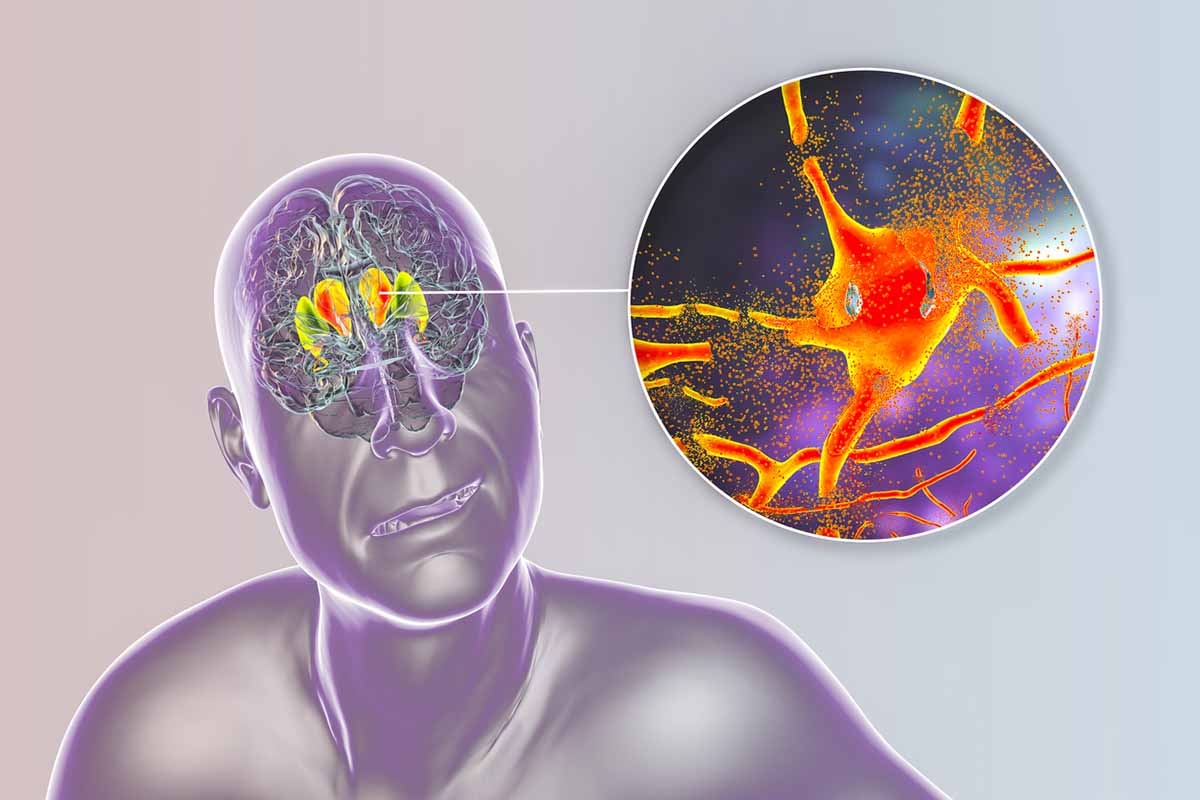Prim Care Companion CNS Disord 2023;25(2):23lr03487a
To cite: Gupta M, Correll CU. State of the art of diagnostics and genetics in Huntington’s chorea: response to Dr Lange. Prim Care Companion CNS Disord. 2023;25(0):23lr03487a.
To share: https://doi.org/10.4088/PCC.23lr03487a
© 2023 Physicians Postgraduate Press, Inc.
aSouthwood Psychiatric Hospital, Pittsburgh, Pennsylvania
bDepartment of Psychiatry, The Zucker Hillside Hospital, Northwell Health, Glen Oaks, New York
cDepartment of Psychiatry and Molecular Medicine, Donald and Barbara Zucker School of Medicine at Hofstra/Northwell, Hempstead, New York
dDepartment of Child and Adolescent Psychiatry, Charité Universitätsmedizin Berlin, Berlin, Germany
*Corresponding author: Mayank Gupta, MD, Southwood Psychiatric Hospital, Pittsburgh, PA 15241 ([email protected]).
See letter by Lange and case report by Yeo et al.
To the Editor: We thank Dr Lange for his comments on our report on the management of psychotic symptoms in a patient with Huntington’s disease (HD).1 While most of the comments were not related to our case, we appreciate these points, which provide an opportunity for a wider discussion of the relevant topics of diagnostics, genetics, and the role of family history in HD.
First, Dr Lange commented that some patients with HD never show choreiform movements, citing an article published in 1915.2 However, the field of HD has evolved considerably since then, and although we partially agree with this comment, it is important to recognize variations and nuances in the phenomenologic epidemiology of HD. According to the International Parkinson and Movement Disorder Society, the worldwide prevalence of HD is approximately 2.7 per 100,000.3 The motor symptoms consist of both involuntary (chorea) and voluntary movements, but in some cases may also present as parkinsonism and dystonia. The dystonia is more prevalent in the Westphal variant or juvenile HD.4 Phenotypic heterogeneity is widely observed due to differences in the expanded repeat lengths, and symptoms can change over time.5 Over 90% of individuals with HD have chorea.6 The mild chorea may be voluntarily suppressed during the initial phase of HD and is often incorporated into purposeful movements called parakinesia.7 Likewise, issues with motor persistence (ie, inability to sustain a voluntary muscular effort) are also common and observed concomitantly with chorea. The chorea increases both in frequency and amplitude with disease progression and peaks after 10 years of illness.8 In some individuals with HD, chorea may plateau, but worsening is also observed. Juvenile HD symptoms develop before age 20 years; the condition is uncommon, however, in prepubertal children. Of note, behavioral disturbances may be the first symptoms of HD in adolescents, which can complicate and delay the diagnosis.9 The wide range of atypical motor manifestations is not uncommon at the start of the illness and is linked with larger CAG (cytosine-adenine-guanine) expansions and an earlier age at illness onset (compared to individuals with HD who present with classical chorea). In the empirical literature, there are reports estimating that about half of the newly diagnosed patients with HD were unaware of or presented without motor symptoms.10 The unawareness of motor symptoms is common and is associated with lower symptoms of depression as well as impairments in executive function.11
Second, Dr Lange suggested that the normal range of CAG repeats ends at 26 not at 35 repeats, as stated in our report, and that in rare cases, HD can manifest with CAG repeats < 35. We agree with Dr Lange that there are published cases of HD with < 35 CAG repeats and that HD disease expression risk is related to a dimensional rather than categorical biological gradient of CAG repeats, among other biological factors. To understand the context, it is important to take into consideration that HD is an autosomal dominantly inherited neurodegenerative disorder that was described by George Huntington in 1872. In 1993, more than 120 years later, the genetic mutation underlying this disease was found to be an unstable expanded CAG repeat within exon 1 of the HTT gene localized on the short arm of chromosome 4. One year later, in 1994, the New England Journal of Medicine published a study of 1,007 patients with signs and symptoms compatible with a diagnosis of HD who had ≥ 36 CAG repeats (median: 44) (sensitivity: 98.8%; 95% CI, 97.7%–99.4%).12
There were considerable advances in the next 2 decades, and by 2011, it was established that normal HTT genes contain 10–35 CAG repeats and that CAG repeats ≥ 36 can be associated with the development of HD.13 More precisely, CAG repeats between 27 and 35 are considered normal mutable (sometimes called the “intermediate range”) genes, and CAG repeats between 36 and 39 are considered “reduced penetrance alleles.”13 Convergingly, in 2012, the Cooperative Huntington’s Observational Research Trial investigators genotyped 1,985 individuals and reported that 50 (2.5%) had CAG repeats in the intermediate range.14 Nevertheless, there are also isolated, unusual cases of HD with < 36 CAG repeats reported in the literature.14 Therefore, in the last decade, studies were conducted to identify clinical correlates of individuals with the intermediate alleles,15 finding that aging worsened the scores on the Unified Huntington’s Disease Rating Scale independent of genetic status.16 Given the controversy about the intermediate alleles,15,16 caution is needed to avoid overestimation of disease risk based on genetic testing with associated risks of psychosocial implications, stress, and self-stigma secondary to unclear results of “predictive” testing.17 Taken together, the overwhelming opinion is that the isolated presence of these rare cases of HD with CAG repeats < 36 does not necessitate a change in the normal and abnormal repeats threshold.13
Third, Dr Lange commented about CAG expansion in about 60% of paternally transmitted HD, pointing out that CAG contraction is also possible, citing an article published in 1993.18 While unrelated to our case, we partially agree with this suggestion, providing a further opportunity to expand on the significant advances in HD genetics showing evidence that the instability of the CAG repeat mutations is observed in both germline and somatic cells. The mechanisms underlying repeat instability have remained controversial, and rare cases of CAG expansions in maternal transmissions have also been reported. The postulated mechanisms underlying the instability of CAG repeats include altered levels of DNA metabolic proteins, DNA regulation dysfunction, and pathologic interactions with chromatin.19 The mouse model of HD was developed in the 1990s and has aided in the understanding of underlying molecular mechanisms of CAG instabilities. In these models, there was an absence of proteins involved in the mismatch repair or the base and nucleotide excision repair mechanisms, which decreased the pathogenic expansion‐biased somatic mosaicism and/or intergenerational expansions involved in the CAG repeat instability, thereby creating potential leads for the development of therapeutics.20
The high degrees of instability in CAG repeats could be anticipated during HD transmission to future generations. These attributes of the variability of CAG repeats in DNA originate in the sperm of male carriers of the HD gene. A study21 in a large Venezuelan cohort found that repeat-length changes were dependent on the sex of the transmitting parent and constitutive size of the HD CAG repeat and repeat‐length variation in sperm but not on parental age or birth order. Moreover, Wheeler et al21 were the first to report that the sex of the child determines repeat size in maternal transmission. The male child tends to expand while the female child tends to contract CAG repeats. Highlighting these complexities is a report of a recurrent large expansion of a maternal allele with 36 CAG repeats in 2 daughters (to 66 and 57 repeats, respectively), possibly due to gonadal mosaicism in the unaffected mother, leading to the emergence of HD in the second and third decade of life of the affected individuals in a family with no prior history of HD.22
Finally, we concur with Dr Lange’s last comment highlighting the importance of considering family history in making an accurate and early clinical diagnosis of HD and conducting subsequent genetic workup. In juvenile-onset HD, wherein behavioral symptoms could be the first manifestation, as highlighted in our report,1 the family history is a critical element for early identification and management.13
In summary, the state of the art in diagnostic processes and research understanding of the molecular and genetic mechanisms of HD has taken a leap forward, although many unknowns remain and controversies with emerging knowledge continue to rapidly evolve. Amid these developments, to improve outcomes, consideration of family history and close monitoring of psychiatric and motor symptoms both in primary care and specialized centers are critical for targeted diagnostic workup, psychological support, genetic counseling, and multidisciplinary treatment planning in individuals at risk for or with early signs of HD or with an established diagnosis.
Relevant financial relationships: Dr Correll has been a consultant and/or advisor to or has received honoraria from AbbVie, Acadia, Alkermes, Allergan, Angelini, Aristo, Boehringer-Ingelheim, Cardio Diagnostics, Cerevel, CNX Therapeutics, Compass Pathways, Darnitsa, Gedeon Richter, Hikma, Holmusk, IntraCellular Therapies, Janssen/J&J, Karuna, LB Pharma, Lundbeck, MedAvante-ProPhase, MedInCell, Merck, Mindpax, Mitsubishi Tanabe Pharma, Mylan, Neurocrine, Newron, Noven, Otsuka, Pharmabrain, PPD Biotech, Recordati, Relmada, Reviva, Rovi, Seqirus, SK Life Science, Sunovion, Sun Pharma, Supernus, Takeda, Teva, and Viatris; has provided expert testimony for Janssen and Otsuka; has served on a data safety monitoring board for Lundbeck, Relmada, Reviva, Rovi, Supernus, and Teva; has received grant support from Janssen and Takeda; has received royalties from UpToDate; and is a stock option holder of Cardio Diagnostics, Mindpax, LB Pharma, and Quantic. Dr Gupta reports no conflicts of interest related to the subject of this report.
Funding/support: None.
Published online: March 7, 2023.
References (22)

- Yeo K, Gupta M, Correll CU. Huntington’s disease with psychotic features. Prim Care Companion CNS Disord. 2021;23(4):35631. PubMed CrossRef
- Davenport CB. Huntington’s chorea in relation to heredity and eugenics. Proc Natl Acad Sci U S A. 1915;1(5):283–285. PubMed CrossRef
- Pringsheim T, Wiltshire K, Day L, et al. The incidence and prevalence of Huntington’s disease: a systematic review and meta-analysis. Mov Disord. 2012;27(9):1083–1091. PubMed CrossRef
- Martino D, Stamelou M, Bhatia KP. The differential diagnosis of Huntington’s disease–like syndromes: ‘red flags’ for the clinician. J Neurol Neurosurg Psychiatry. 2013;84(6):650–656. PubMed CrossRef
- Mariani LL, Tesson C, Charles P, et al. Expanding the spectrum of genes involved in Huntington disease using a combined clinical and genetic approach. JAMA Neurol. 2016;73(9):1105–1114. PubMed CrossRef
- Thorley EM, Iyer RG, Wicks P, et al. Understanding how chorea affects health-related quality of life in Huntington disease: an online survey of patients and caregivers in the United States. Patient. 2018;11(5):547–559. PubMed CrossRef
- Paulson HL, Albin RL. Huntington’s Disease: Clinical Features and Routes to Therapy. In: Lo DC, Hughes RE, eds. Neurobiology of Huntington’s Disease: Applications to Drug Discovery. Frontiers in Neuroscience. CRC Press/Taylor & Francis; 2011.
- Smith MA, Brandt J, Shadmehr R. Motor disorder in Huntington’s disease begins as a dysfunction in error feedback control. Nature. 2000;403(6769):544–549. PubMed CrossRef
- Squitieri F, Berardelli A, Nargi E, et al. Atypical movement disorders in the early stages of Huntington’s disease: clinical and genetic analysis. Clin Genet. 2000;58(1):50–56. PubMed CrossRef
- McCusker EA, Gunn DG, Epping EA, et al; PREDICT-HD Investigators of the Huntington Study Group. Unawareness of motor phenoconversion in Huntington disease. Neurology. 2013;81(13):1141–1147. PubMed CrossRef
- Andrews SC, Craufurd D, Durr A, et al. Executive impairment is associated with unawareness of neuropsychiatric symptoms in premanifest and early Huntington’s disease. Neuropsychology. 2018;32(8):958–965. PubMed CrossRef
- Kremer B, Goldberg P, Andrew SE, et al. A worldwide study of the Huntington’s disease mutation: the sensitivity and specificity of measuring CAG repeats. N Engl J Med. 1994;330(20):1401–1406. PubMed CrossRef
- Nance M, Paulsen JS, Rosenblatt A, et al. A Physician’s Guide to the Management of Huntington’s Disease. 3rd ed. | Huntington’s Disease Society of America; 2011.
- Ha AD, Beck CA, Jankovic J. Intermediate CAG repeats in Huntington’s disease: analysis of COHORT. Tremor Other Hyperkinet Mov (N Y). 2012;2(0):tre-02-64-287-4. PubMed CrossRef
- Savitt D, Jankovic J. Clinical phenotype in carriers of intermediate alleles in the huntingtin gene. J Neurol Sci. 2019;402:57–61. PubMed CrossRef
- Cubo E, Ramos-Arroyo MA, Martinez-Horta S, et al; European HD Network. Clinical manifestations of intermediate allele carriers in Huntington disease. Neurology. 2016;87(6):571–578. PubMed CrossRef
- Dale M, Wood A, Zarotti N, et al. Using a clinical formulation to understand psychological distress in people affected by Huntington’s disease: a descriptive, evidence-based model. J Pers Med. 2022;12(8):1222. PubMed CrossRef
- Zühlke C, Riess O, Bockel B, et al. Mitotic stability and meiotic variability of the (CAG)n repeat in the Huntington disease gene. Hum Mol Genet. 1993;2(12):2063–2067. PubMed CrossRef
- Kerschbamer E, Biagioli M. Huntington’s Disease as neurodevelopmental disorder: altered chromatin regulation, coding, and non-coding RNA transcription. Front Neurosci. 2016;9:509. PubMed CrossRef
- Dandelot E, Tomé S. Genetic Modifiers of CAG.CTG Repeat Instability in Huntington’s Disease Mouse Models. IntechOpen; 2017.
- Wheeler VC, Persichetti F, McNeil SM, et al; US-Venezuela Collaborative Research Group. Factors associated with HD CAG repeat instability in Huntington disease. J Med Genet. 2007;44(11):695–701. PubMed CrossRef
- Laccone F, Christian W. A recurrent expansion of a maternal allele with 36 CAG repeats causes Huntington disease in two sisters. Am J Hum Genet. 2000;66(3):1145–1148. PubMed CrossRef
Please sign in or purchase this PDF for $40.





